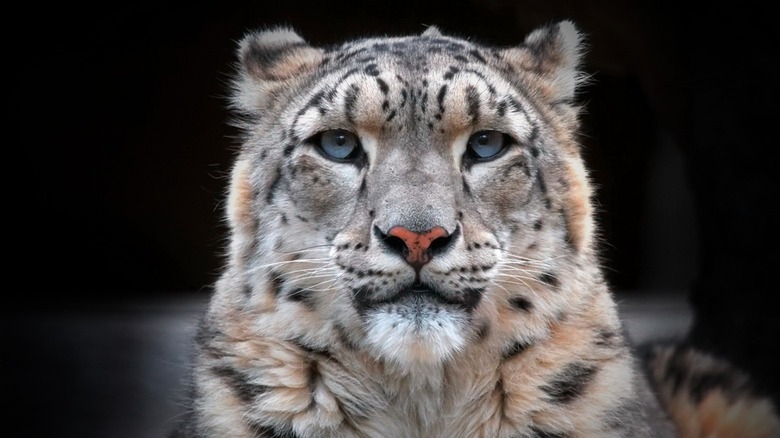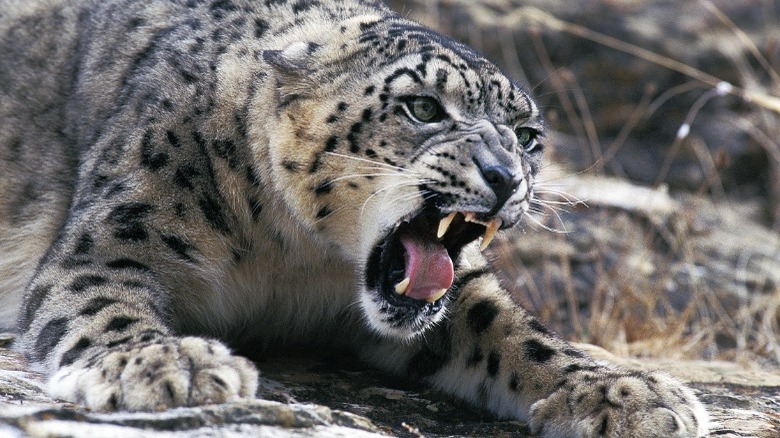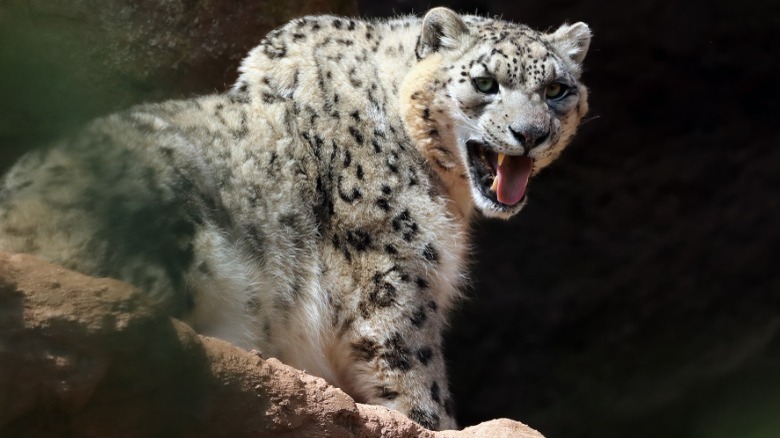Snow Leopards' Throat Physiology Gives Them An Unlikely Trait
Snow leopards come from a group of big cats in the genus Panthera, which makes them relatives of tigers, lions, jaguars, pumas, and leopards (via Panthera). While they share part of their name with leopards, these animals actually have more in common with tigers. These wondrous creatures call the mountains of Central Asia their home with a range spanning 772,000 square miles , per the Snow Leonard Trust. Up to 60% of this range is in China.
Special characteristics of snow leopards help them in their cold and rugged habitat. Their long tails support their balancing abilities and the thick fur can provide them with additional warmth –- kind of like having a built-in scarf. Their front legs — which are shorter than their back legs — and their large front paws, act similarly to snowshoes, making it easier for these animals to handle the snowy terrain. The distinctive color pattern of their fur also provides the perfect form of camouflage.
Snow leopards can't roar
Some features of snow leopards don't seem to be environmental adaptations, however. Their throat physiology makes them different from many other big cats, and it changes the kinds of sounds that snow leopards can make. They can produce growls, hisses, and other noises like many of their big cat counterparts, but there's one sound often associated with these kinds of animals that snow leopards can't make (via the Snow Leopard Trust).
Unlike their Panthera relatives, snow leopards can't roar. This issue can be attributed to the difference in the vocal cords of these animals, according to Discover Wildlife. A special layer of tissue is missing on the vocal cords of snow leopards. Overall, their throats are closer in structure to smaller cats, per Nature. This physical difference may explain why snow leopards can purr while lions, leopards, jaguars, and tigers can't. Snow leopards also have another vocal trait as well.
Snow leopards make other noises
Snow leopards may not be able to roar, but they do make a sound called a chuff. According to the Carnegie Museum of Natural History, they create this puffing noise by pushing air through their nostrils while keeping their mouths shut. Tigers and jaguars can also produce chuffing sounds, and these may be signals they use to connect with other members of their species. For the more solitary snow leopard, it's simply considered a non-threatening noise (via the Snow Leopard Trust).
To understand more about snow leopard behavior and vocalizations, much more study is required. Out of all the species in the Panthera genus, snow leopards may be the most mysterious. The remote locations that these apex predators call home makes observing them quite difficult. Their predominantly isolated lives and their nomadic ways also can be challenging for scientists. This prevents researchers from getting a more precise count of the population of these remarkable animals –- estimates state that there are somewhere between 4,000 to 6,500 snow leopards in their natural habitat.


